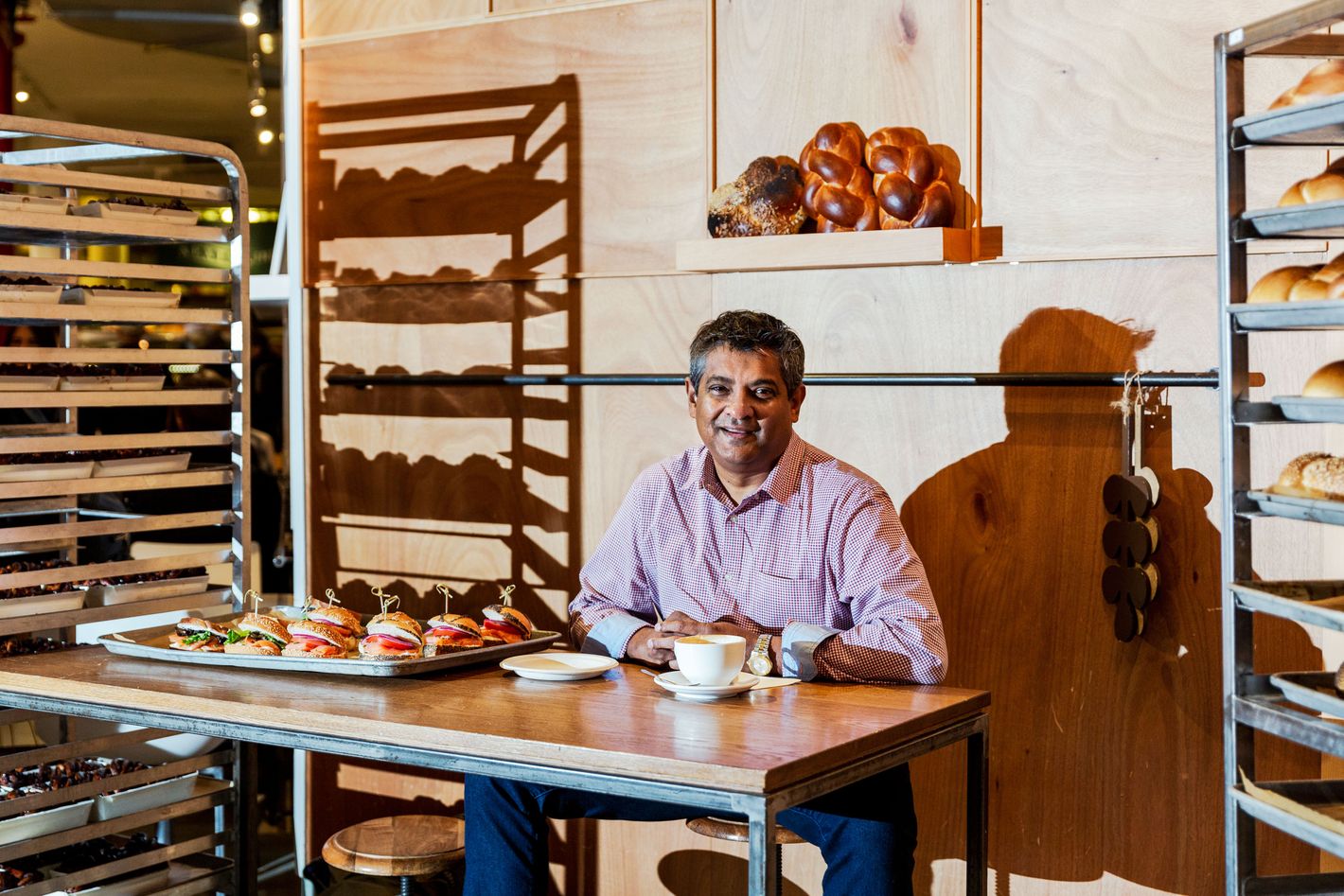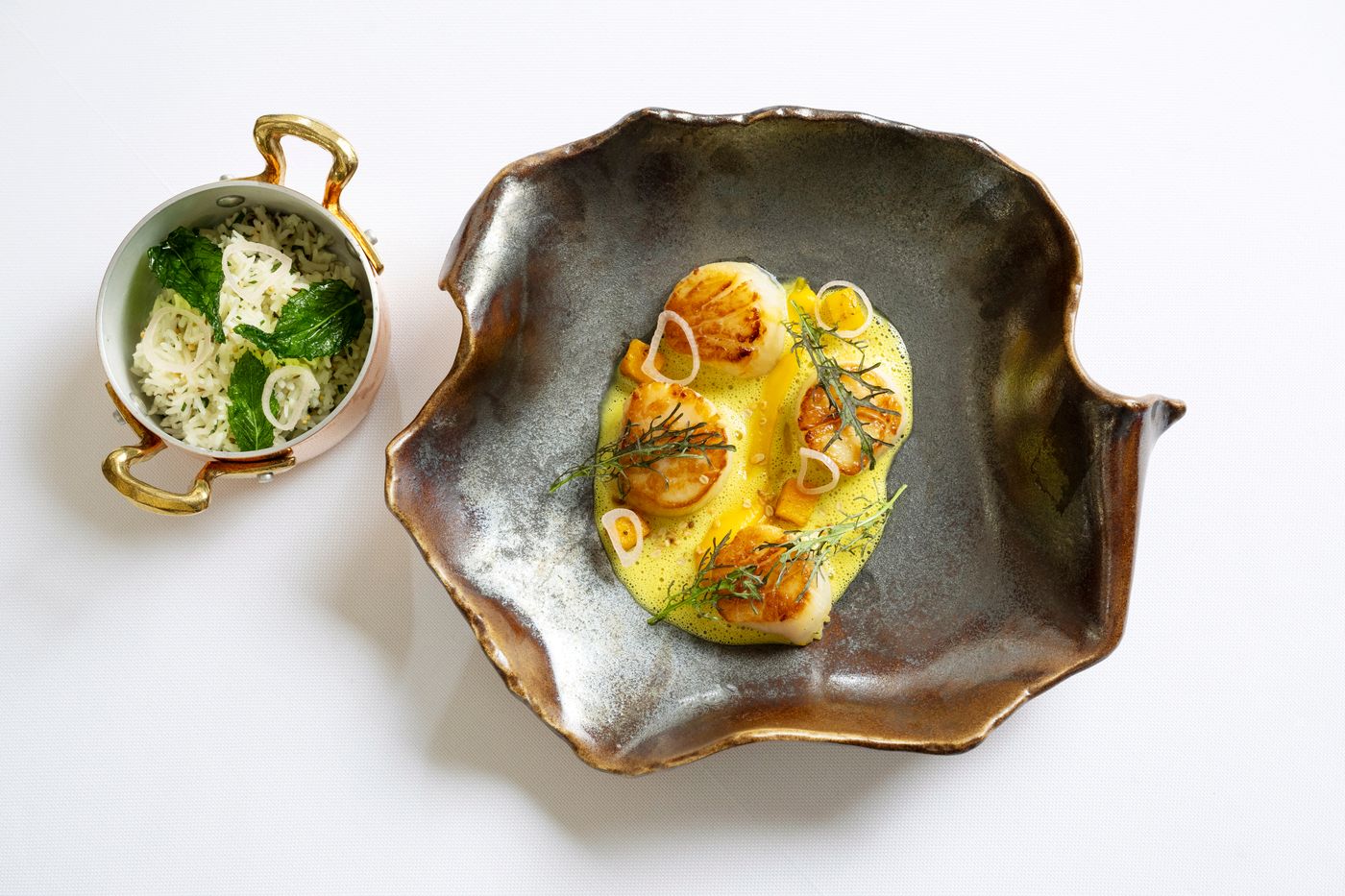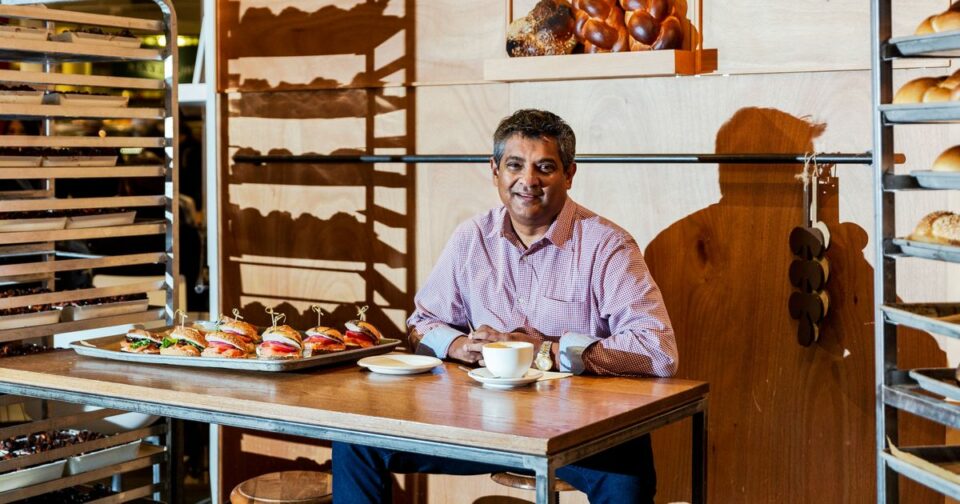
Before his death in 2020, the chef Floyd Cardoz was best known for opening Tabla, Danny Meyer’s early entrant into fine-dining Indian; running the kitchen at North End Grill; and then venturing on his own with Paowalla, later flipped to Bombay Bread Bar. Cardoz was one of the millions of Americans who succumbed to the virus, and not the only chef, but four years after his death, he remains unusually, and touchingly, present on the menus and minds of his New York City colleagues.
Earlier this spring, Dan Kluger of Greywind hosted four dinners in honor of his friend, using recipes and techniques inspired by his time working up from a line cook to chef de cuisine under Cardoz at Tabla. According to Kluger, Cardoz was not simply a tremendous Indian chef but a world-class chef, period: “Even if you took away the spices, he’d still be one of the best chefs out there. What encapsulated his food was the balance of sweet, spicy, salty, crunch, and fatty.”
At Cafe Carmellini, Andrew Carmellini — who cooked alongside Cardoz at Lespinasse — features scallops atop a tamarind chutney called Scallops Cardoz. The dish is an homage to a specific technique Carmellini learned from Cardoz called tarka, in which spices are bloomed in ghee.
Meanwhile, at the Brooklyn fine-dining destination Olmsted, Greg Baxtrom, who worked with Cardoz at North End Grill, serves what he calls a Floyd Cardoz chutney: “When we drop it at the table, we say, ‘This is a Floyd Cardoz recipe.’” Often, recipes are like quotes on a throw pillow, recipes are an art form often given over to apocrypha. Perhaps this has to do with the fact that recipes can’t be copyrighted, but that’s a tad too legalistic. More likely it’s that dinner is naturally impermanent: a recipe darts away from its creator by design. And that, at the time of eating a dish at a restaurant, the name of its creator is obvious; when a restaurant ceases to be, the recipe is freed from the net of credit.
This isn’t to say that chefs don’t cook other chefs’ recipes. In fact, the vascular system of kitchens is deeply connected: Techniques, tricks, approaches, and philosophies attach themselves to a chef like iron filings. It’s one reason that young chefs making a name for themselves will often shorthand their style by emphasizing their previous places of employment — the Noma vets, the EMP alums, the former sous-chefs from Bouley — more than other lines of work. But rarely does credit make its way to a diner.

One reason why so many of Cardoz’s colleagues want to keep his name in circulation is that, even in his lifetime, despite the James Beard nominations and cookbooks and Top Chef victories, Cardoz’s talent felt perennially overlooked and underappreciated. Tabla was greeted with rapturous critical praise, but according to Kluger, “People didn’t know what they were getting — they were still wrapped up in curry.”
After Tabla closed in 2010, Cardoz took over Meyer’s North End Grill before venturing on his own with the short-lived White Street. He returned to Indian — specifically Goan — cuisine with Paowalla, a high, but flipped that to the more casual Bombay Bread Bar a year and a half later, partially in search of a wider, younger audience. A few months before his death, he told the food writer Priya Krishna that he’d never open another restaurant in New York; when he died, he was working as an executive vice-president for the Estiatorio Milos group while running a pair of successful restaurants in Mumbai.
Carmellini, like many, credits Cardoz for “bringing Indian techniques and flavors to the forefront of American fine dining when they weren’t.” But to call Cardoz a practitioner of fusion cooking isn’t quite accurate. “I do miss the refined approach that he took to Indian food, not that he whitewashed it all. The French technique was in service of his authentic flavor,” Carmellini says.
Cardoz’s legacy is still very much alive. Without the yeoman’s work of Tabla, which slowly awakened white American diners to the wonders of Indian cuisine, restaurants like Semma and Dhamaka — not to mention Sona, Lore, Baar Baar, Pijja Palace, the just-opened Bungalow, and too many more to mention — might never exist. A scallop here, a chutney there, a series of dinners: a modest posthumous recompense that only hints at their namesake’s place in New York’s restaurant history.
Joshua David Stein , 2024-05-28 13:00:00
Source link


